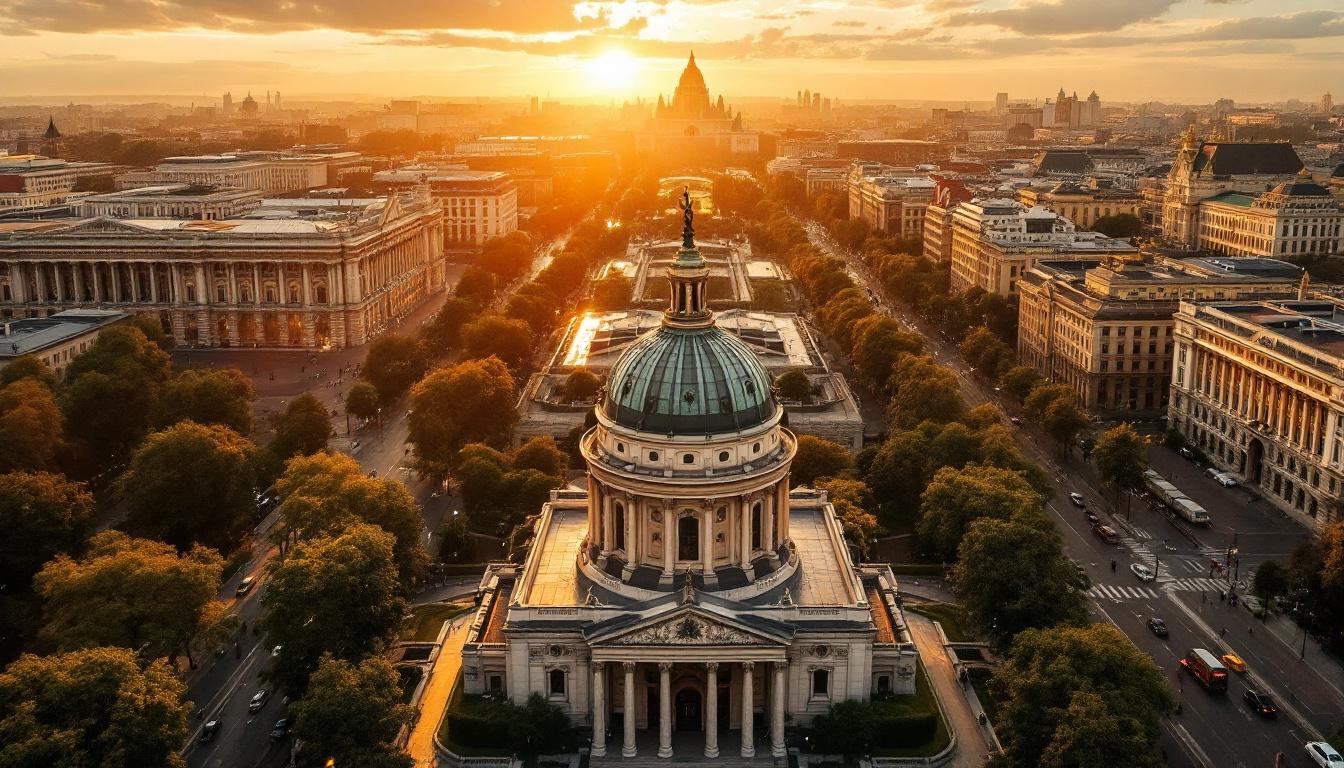Bucharest, Romania’s capital, stands as a magnificent contradiction – where Soviet-era concrete meets Belle Époque elegance beneath the shadow of the world’s second-largest administrative building. This Balkan metropolis has emerged from decades behind the Iron Curtain to reveal itself as one of Europe’s most surprising cultural treasures, yet remains delightfully under-explored by Western tourists.
The colossal giant that holds a nation’s controversial memories
The Palace of Parliament demands attention – not just for its staggering proportions (365,000 square meters, 1,100 rooms, and 12 stories tall), but for what it represents. Built during the brutal Ceaușescu regime, this concrete colossus consumed one-fifth of Bucharest’s historic center and required 700 architects working 24/7 to complete.
“This building embodies our complicated relationship with our past,” explains Cristian Mihailescu, a local historian. “It’s both a monument to megalomania and our most visited tourist attraction – we can’t escape its shadow.”
Where Belle Époque glamour survived communism
Just steps from Soviet-style apartment blocks, Bucharest’s tree-lined boulevards reveal why it once earned the nickname “Little Paris.” The Romanian Athenaeum concert hall stands as perhaps the finest example, its neoclassical columns and spectacular domed ceiling housing one of Europe’s most acoustically perfect concert venues.
In Lipscani, the cobblestoned old town, restored 19th-century buildings now pulse with modern energy. This district’s transformation from neglected quarter to bohemian hotspot parallels similar hidden European gems that have maintained their historic character despite modern pressures.
The secret garden that locals treasure
Cismigiu Gardens, Bucharest’s oldest public park, offers a verdant escape from urban intensity. Unlike the manicured perfection of France’s artistic garden masterpieces, Cismigiu charms with romantic bridges spanning tranquil ponds where locals play chess under chestnut trees that have witnessed generations of Bucharest romance.
A bookstore that challenges the Sistine Chapel
Cărturești Carusel bookstore might be the most beautiful literary space in Europe. Housed in a restored 19th-century bank, its six floors of spiraling white balconies create a cathedral-like space dedicated to literature. The top-floor teahouse offers a peaceful vantage point to absorb the architectural wonder below.
“We wanted to create not just a bookstore but a cultural landmark,” says Nicoleta Iorga, one of the founders. “In a city rebuilding its identity, we believe culture must be at the center.”
The hidden monastery among skyscrapers
Stavropoleos Monastery remains one of Bucharest’s most precious secrets. This tiny 18th-century Orthodox church, with its intricately carved columns and stunning frescoes, sits improbably tucked between modern buildings. Its peaceful courtyard feels worlds away from the bustle outside, much like other hidden Mediterranean treasures that glow with unexpected beauty.
Culinary revival in unexpected places
Romanian cuisine is experiencing a renaissance at restaurants like Caru’ cu Bere, a neo-Gothic beer hall from 1879 serving traditional sarmale (cabbage rolls) and mămăligă (polenta). Meanwhile, the city’s burgeoning food scene embraces both tradition and innovation, similar to how urban wilderness areas can blend the natural and constructed worlds.
Where communist-era apartment blocks become art galleries
Urban renewal takes creative forms in Bucharest. The Ferentari district, once notorious for crime, now hosts vibrant street art transforming gray concrete into colorful canvases. This artistic revolution mirrors transformations happening in evolving cities worldwide, including those in remote archipelagos that continue to shape human understanding.
Bucharest defies simple categorization. Like its Palace of Parliament – excessive yet impressive, controversial yet essential – the city embodies contrasts that make it uniquely captivating. In its jumble of architectural styles and historical legacies, travelers discover not just a destination but a complex, evolving story waiting to be explored.
